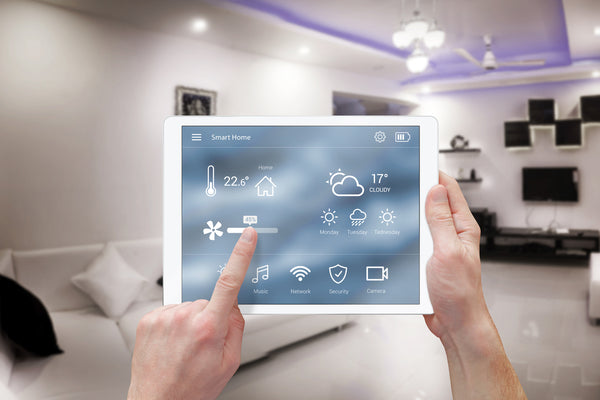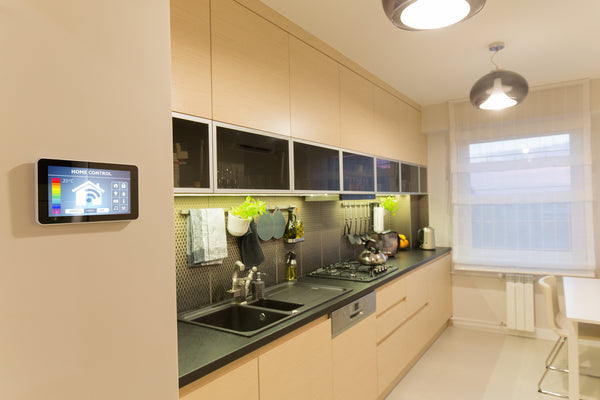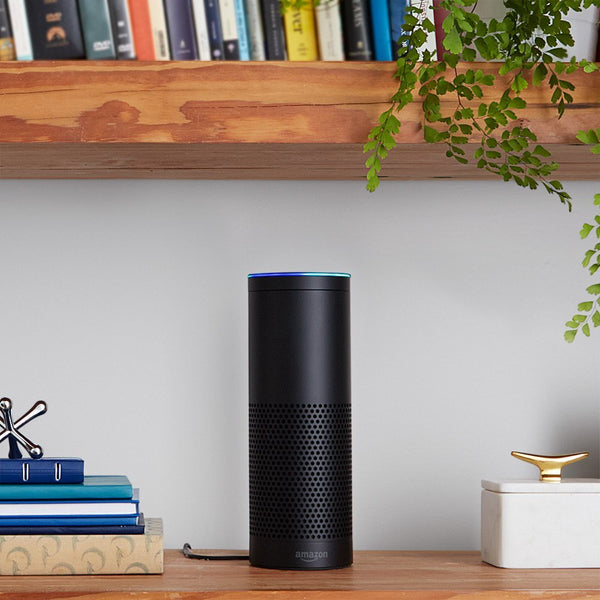Recently, there’s been a lot of buzz about home automation. Being able to just say something out loud and having your lights dim or your television start playing your favorite movie. With the release of the new Amazon Echo hockey pucks and Google Home, a new spotlight has been placed on voice activation. With new voice control options, we can finally live in a Star Trek world, telling our home to do things and having it react. But what exactly is home automation, and for those of us who aren’t Elon Musk or Bill Gates; how do we get started with it?
What It Is and What It Isn’t

Home automation is a way to tie things in your home together and allow them to be controlled by voice or a centralized remote control. That means that given the right equipment, you can turn on your lights when you’re pulling up to your house, or tell your stereo to start playing your favorite song. With some apps, you can have your thermostat adjust automatically at different times, or change the amount of lighting you have based on your mood.
What home automation won’t do is do any of this without your input. Your home may become smart, but it’s not able to think on its own just yet. So if you’re worried about your house going crazy and locking you in, don’t. Your house can’t think on its own, you have to do its thinking for it.
What Are The Benefits?

There are several benefits to automating your home. One of the most tangible is saving money, primarily on your electric and heating/cooling bills. If you think you forgot to turn off the lights when you leave in the morning, you can check with your smart phone. If you did, one button press, and they’re off. You don’t have to worry about changing the thermostat either. There are other devices that will combine to save you quite a bit on all of your utilities.
Home automation will also give you peace of mind. Security systems, such as cameras, automatic locks, and alarm systems are made to be connected. Imagine never having to worry about lost keys, or having to give your kids keys that they can lose or give to friends when you don’t want them to. Locks can be keyed to fingerprints or keypads, which make it easy to let yourself in if your hands are full. If you have young kids that require a sitter, cameras make it easy to look in on them when you’re gone, giving you additional peace of mind.
Getting Started

So how do you get started with making your home smart and start saving money? The first step is to get a home automation hub. While individual devices are controllable via their individual apps, who wants to try to juggle five or six different interfaces? This device acts as the central core to all of the smart devices that you can hook up to your home. The best part is that once you get that device, you can just add devices as you go. Most hubs cost less than $150 and can attach around 200 devices. Look for a smart hub that has a battery backup so if the power goes out, you aren’t stuck doing everything manually (if you remember how).
Once you have the hub, one of the first places most people look at are lights and their thermostat. There are a lot of different options for your thermostat. The Nest thermostat was designed by same team that designed the original iPod. It has built in Wi-Fi and pairs easily with any hub. The Ecobee3 is also a great option because it doesn’t just rely on one sensor to check your home’s temperature. You can set up multiple sensors to ensure the comfort level of your entire home.
For lights, the Philips Hue system is probably the go-to name in automated home lighting. They’ve been at the game for a very long time. Each bulb is rated from 360 to 800 lumens, making all sorts of lighting possible. As you add bulbs, you can control more and more of the lighting in your home. The possibilities become endless then, whether you want to prank your kids or set the lights for movie night. Philips offers a lot of other options to choose from, from table lamps to suspension lamps and even portable lights, not just bulbs.
GE also sells a comprehensive system that will connect to your hub via Wi-Fi with an expandable system. And if you’re worried about the lifespan of the bulbs, these are CFLs, which gives you about 23 years of life with average use. That’s a lot of movie nights. Additionally, some of the bulbs are able to display different colors, so if your kids want a purple light, here it is.

Those are just the basics for home connectivity, of course. You can add in alarms, smart appliances, even devices to monitor and throttle your water supply when you want it to. Perhaps one of the best additions you can get for a smart home, however, is an Amazon Echo or a Google Home device. These devices sync up and turn your home into a voice-activated wonderland. You can tell your home to turn up the lights, start your favorite song, or even start your morning coffee while you’re in the shower.
Some of the devices also have If This Then That (IFTTT) compatibility, meaning you can create triggers for your home devices. Want the heat to come on only if the internal temperature reaches 68 degrees? You can do that. Automatically turn on lights when it’s dusk? That’s easy to do as well. Set an alert to remind you to order new filters for your furnace after it’s run for 200 hours? You can do that as well.
The possibilities for home automation to save you time, money, and give you additional peace of mind are endless. And with the expandability of a hub-based system, you don’t have to go all in all at once; you can build up your system piece by piece as need be. Try it, and you’ll be amazed at how quickly you get used to the feel of just telling your house to turn off the lights. The future is now, all you have to do is be willing to try it out.


